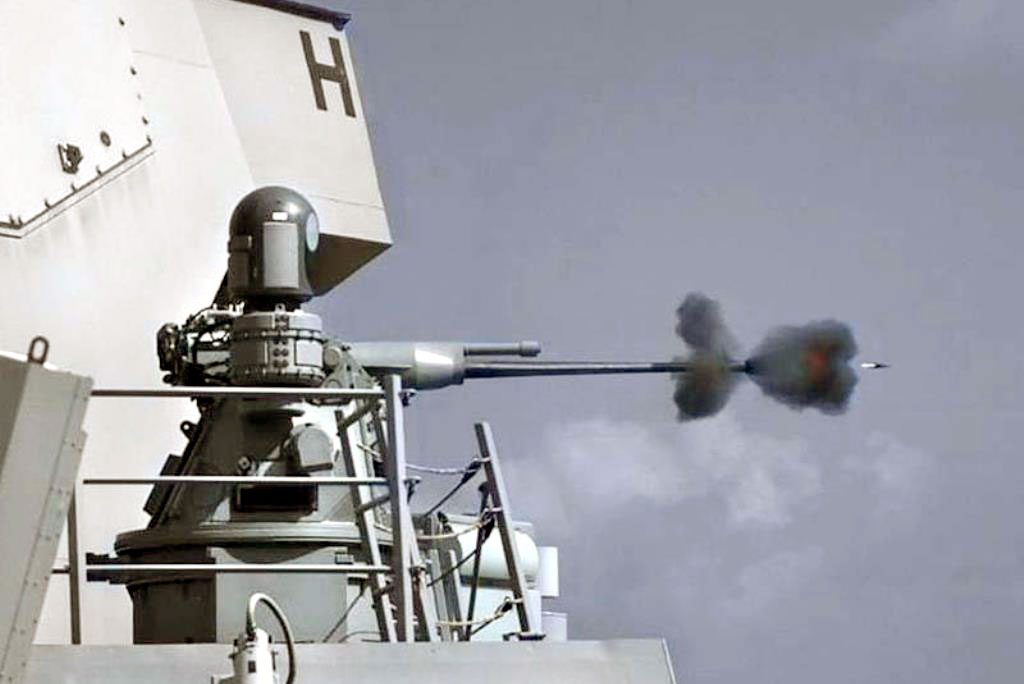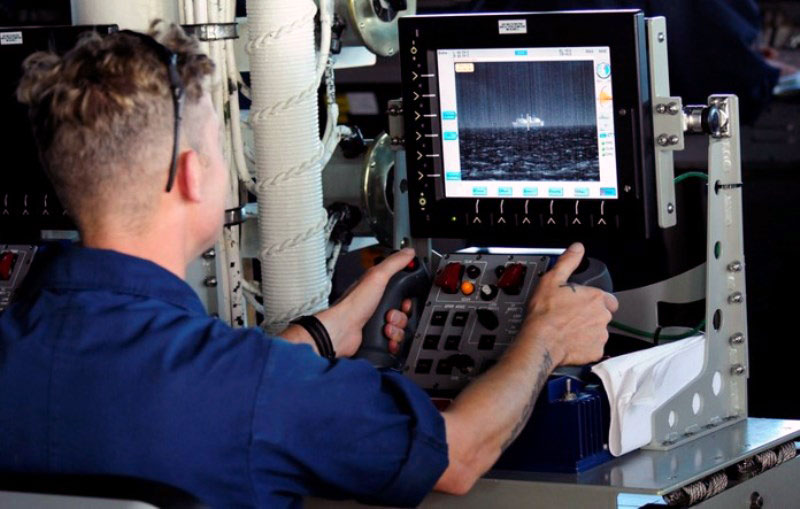
C-UAS: the new Rafael’s Typhoon Mk-30c mission
As all systems built by the human being, these may be bad or good depending of the use. While warships are increasingly embarking unmanned aerial systems (UASs) that allow them to increase their reach in terms of intelligence gathering, on the other hand the same systems, in the hands of the “bad guys”, acquiring intelligence on the vessel or even threatening her with an explosive payload, are becoming a real danger.
Numerous navies are dealing with that problem in different ways, neutralising a UAS being first of all a matter of detection, classification and identification, not easy task as many of them are pretty small and present a very limited radar cross section, then comes the issue of neutralisation, which can be done in different ways, depending on the scenario.

One of the possibilities is to go for a hard kill. And this is definitely what Rafael of Israel is proposing to the customers of its Naval Remotely-controlled Weapon Station (NRWS) Typhoon Mk-30c in its last iteration.
“In the last 15-20 years we sold over 750 such systems all over the world, our Typhoon operating on 11 different classes of ship, ranging from fast patrol boats, which are fitted with a single mount, to aircraft carriers, where 5-6 of them are embarked,” Oren, head of naval weapon systems business line at Rafael’s Naval Directorate tells EDR On-Line.
The system was originally designed to cope mostly with surface threats, which are typically represented during trials and training by the standard NATO target which measures 2.3 x 2.3 meters, a size that is definitely much greater than that of a micro or mini-UAS.

When Rafael decided to adapt its naval 30 mm turret to the new role, a series of modification were needed. “In the last 2-3 years we incorporated a number of modification to improve key performances, as we have to deal with targets which area is 300 times smaller than that of the standard NATO target,” he explains, adding that “to be able to cope with it we had to make improvements in three main areas, to be able to observe the target, track it and finally hit it.”
The first element to be improved was therefore the electro-optic system, incorporating very sophisticated image processing elements as well as new tracking algorithms, allowing to find and then follow a very small and very agile flying object at distance. The improved optronic system is now capable to automatically recognise the UAS, classify it and then track it.
However this would not be useful if installed on a turret that cannot compensate the ship’s movements to an adequate level. Rafael thus improved the mount stabilisation. “We upgraded some of the stabilisation elements such as actuators, gyroscopes, tachometers and resolvers, which led to a much better stability,” Oren says.

Originally developed, as said, to cope mostly with naval targets, the Typhoon Fire Control System was therefore optimised for targets that were found around the horizon, thus the gun was pointing around the 0° elevation. “We had to modify the algorithms in the FCS to compute correctly the required polynome, in the super-elevation angles, the Typhoon having an elevation arc going from –20° to +70°, the latter being considered the minimum to properly engage UAS,” Oren adds.
All those improvements led to a much better accuracy when firing against small targets at long distance. A new 5 pulse-per-second laser rangefinder was also integrated to provide accurate distance measuring; keeping it on the target is no easy task, therefore Rafael engineers developed mode that in case of broken contact will automatically start a circular scanning of the area to reacquire the target, while a range-estimation system will provide the data to the ballistic computer awaiting for the new confirmed distance.

All those improvements led to a much better accuracy, which was improved by over 20%, while the new role required a greater number of ready rounds, due to the type of engagement against a UAS. A 400 rounds box is thus provided, doubling the number of ammunition available. It is difficult to estimate how many fire missions the system can do before reloading, as C-UAS engagements can start typically at 1,000 meters distance, and varying scenario conditions, but with an estimate of about 10 rounds per engagement it is safe to say that at least 30 fire actions can be carried out. Rafael is ready to provide its NRWS fitted with the Northrop Grumman’s Bushmaster Mk44 Stretch that is capable to fire the 30x173mm Mk310 PABM-T airburst round, which generates a cloud of submunitions in front of the UAS, considerably reducing ammunition consumption and increasing the kill capability.
“We have already integrated the upgraded elements into an existing Typhoon RWS in service with one of our leading international customer navies, with very good results,” Oren says.

The Typhoon Mk-30c has a traverse arc of ±165°, although considering the superstructures of the ship the arc of fire is usually smaller, this also affecting the acquisition capability. The stabilised optronic package can however be split from the gun mount and installed on the ship superstructures in order to provide maximum coverage, something useful especially on small naval units which embark a single Typhoon turret. As for firing, it will be the Captain’s decision to eventually engage a target that appears in a dead angle for the gun, manoeuvring the ship in order to bring it within the arc of fire.
As tracking, FCS and stabilisation elements are common to Typhoon and Mini-Typhoon mounts the upgraded performances can be also added to the latter. However another option is available: “We can add a coaxial machine gun to our Typhoon Mk-30c or Mk-25 NRWS, allowing the use of much less expensive ammunition when the threat is within range,” Oren explains.

While the improved performances add a new role to the Typhoon mounts, they also allow to better cope with surface targets, increased accuracy meaning reduced ammo consumption, hence a better capability to react to swarm attacks by small boats.
The Typhoon Mk-30c, which overall weight is less than 1,000 kg, is now fully available in its new C-UAS configuration.
Photos courtesy Rafael



